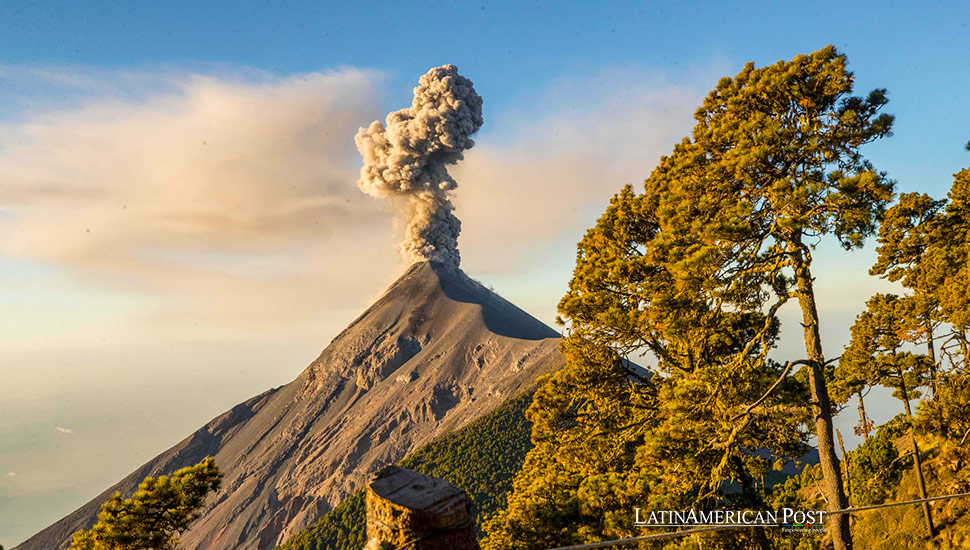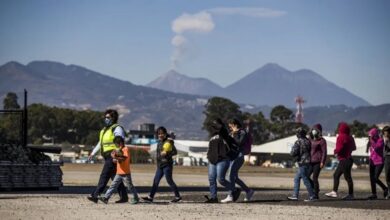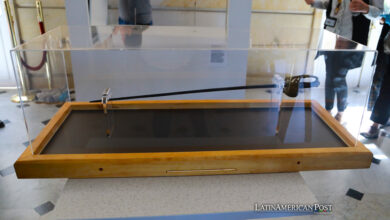Thrilling Danger: Hiking Guatemala’s Twin Volcanoes

Tourists flock to Guatemala’s twin volcanoes, Acatenango and Fuego, for a breathtaking experience despite the inherent dangers. The allure of witnessing live volcanic activity draws hundreds daily, yet experts warn that the risks are perilously high.
A popular tourist activity in Central America involves standing just a few hundred meters from a boiling volcanic lava flow. Backpackers in the region often plan to hike the twin volcanoes of Acatenango and Fuego, a rite of passage for many travelers.
“The thing I remember most is the bubbling sound,” recalls 23-year-old Leila Mitchell, who visited in 2022. “Huge spurts of orange, glowing lava. It was breathtaking.” This captivating yet hazardous experience has driven the popularity of these tours sky-high. However, with the increasing volcanic activity, the dangers have escalated too. “It’s only a matter of time before someone gets killed,” says Matthew Watson, Professor of Volcanoes and Climate at the University of Bristol, in an interview with the BBC.
The Allure and the Risk
Fuego’s eruptions, visible from its dormant neighbor Acatenango, draw tourists eager to witness nature’s raw power. Situated on the outskirts of Antigua, a city in Guatemala’s central highlands, the volcanoes have become a magnet for thrill-seekers. Fuego, in particular, can erupt up to 200 times a day, making it a spectacular, albeit risky, destination.
Tour companies capitalize on this natural wonder by offering tours that bring groups perilously close to Fuego’s simmering crater. Some tours go within 100 meters of the rim, a proximity that is both thrilling and dangerous. “A lethal eruption in 2018 buried the town of San Miguel Los Lotes,” recalls Prof. Watson to the BBC. He stopped taking students to Fuego in 2015 due to the increasing activity. The Guatemalan government agency INSIVUMEH, responsible for monitoring the volcano, has recorded 79 severe eruptions, called paroxysms, since 1999, with more than 47 occurring after 2015.
On June 3, 2018, a powerful eruption caught many by surprise, burying the town of San Miguel Los Lotes under ash and rock. The official death toll was 218, but locals believe up to 3,500 people may have perished. Despite such tragedies, tourists continue to flock to Fuego. Guides like Jonathan Dovgan Prera, who experienced the 2018 eruption firsthand, continue to lead tours up the active volcano, drawn by the explosive activity that attracts visitors daily.
Economic Incentives and Local Impact
Tourism is a significant economic driver for Antigua and Guatemala as a whole. 2023 tourism brought over £838 million to the nation’s coffers. Local guides estimate that 200 to 400 people visit the volcanoes daily, with numbers soaring to 1,000 on busy weekends. Matt Hartell, one of the first adventure tour guides in the area, recalls to the BBC, “We’d be the only people on the mountain. Now, there are 30 other companies out there every day of the week.”
This booming tourism industry, however, comes with increased risks, especially for those who spend the most time in the danger zone—the local guides. Due to the dangers involved, Hartell notes that some of his guides are reluctant to take people to Fuego. “Some of my guides don’t want to take people over there,” he says, trying to avoid it whenever possible.
Tourism not only fuels the local economy but also poses a complex challenge. INSIVUMEH issues daily bulletins in Spanish warning of the risks of injury or death for those who venture too close to Fuego’s crater. Yet, as climbing Fuego is legal, the agency needs more power to stop visitors. Local municipalities charge entry fees for various parts of the volcanoes, benefiting from the influx of tourists.
Finding a Safer Path
Given the substantial risks, some experts suggest alternative approaches to volcano tourism. The terraces of Acatenango offer a spectacular and safer view of Fuego’s lava displays. Prof. Watson is puzzled that tours continue to approach the active volcano so closely. “Given how good the observation platform from the terraces of Acatenango is, it seems a completely unnecessary risk,” he says.
Despite warnings, the thrill of climbing Fuego remains a powerful draw. For many, the experience of standing near an active volcanic crater is unique and worth the risk. Alex Gordon, a 24-year-old who climbed Fuego earlier this year, describes the feeling as unforgettable. “The feeling of being at the top of the volcano will sit with me forever,” he says.
However, after learning about the dangers, others, like Leila Mitchell, would prefer to appreciate Fuego from a safe distance. She climbed Acatenango and Fuego and believes the dormant volcano offers stunning views and a challenging hike up a beautiful landscape without the life-threatening risk.
The challenge lies in balancing the economic benefits of volcano tourism with the imperative of ensuring safety. Better communication and education about the risks and strict safety regulations could help mitigate the dangers. INSIVUMEH volcanologist Roberto Mérida suggests establishing a restriction zone around Fuego, with its radius depending on the level of volcanic activity. Yet, given the current state of affairs, he remains pessimistic. “Actions are usually taken in response to tragedy,” he says. “In this case, it will be until one or more tourists die in the Fuego volcano.”
The Role of Authorities
The National Tourism Institute of Guatemala (INGUAT) states that it provides recommendations on risk prevention based on information from official sources. However, it does not promote tourism in dangerous areas or receive income from visits to national parks or volcanoes. Local authorities, who charge entry fees, benefit from the tourism revenue but need more strength to impose restrictions effectively.
The situation calls for coordinated efforts between local municipalities, tour operators, and national authorities to ensure safety while maintaining the economic benefits of volcano tourism. Dr. Ailsa Naismith, who researched Fuego, emphasizes better communication between guides and volcanologists. Guides like Jonathan Dovgan Prera express eagerness for more interaction with monitoring bodies, believing it would enhance their understanding of what to expect.
Formal discussions and cooperation between tourism professionals and experts in volcano management could lead to safer practices and better preparedness. As tourism continues to thrive, proactive measures can be implemented to prevent future tragedies while allowing visitors to safely enjoy the awe-inspiring beauty of Guatemala’s volcanoes.
Also read: Echoes of Genocide: Unearthing Guatemala’s Dark Past
While the thrill of climbing Fuego attracts tourists, the inherent dangers must be addressed. Balancing economic benefits with safety measures is crucial. By fostering better communication and implementing stricter safety regulations, it is possible to protect both tourists and local guides, ensuring that the beauty of Guatemala’s volcanoes can be enjoyed without undue risk.





